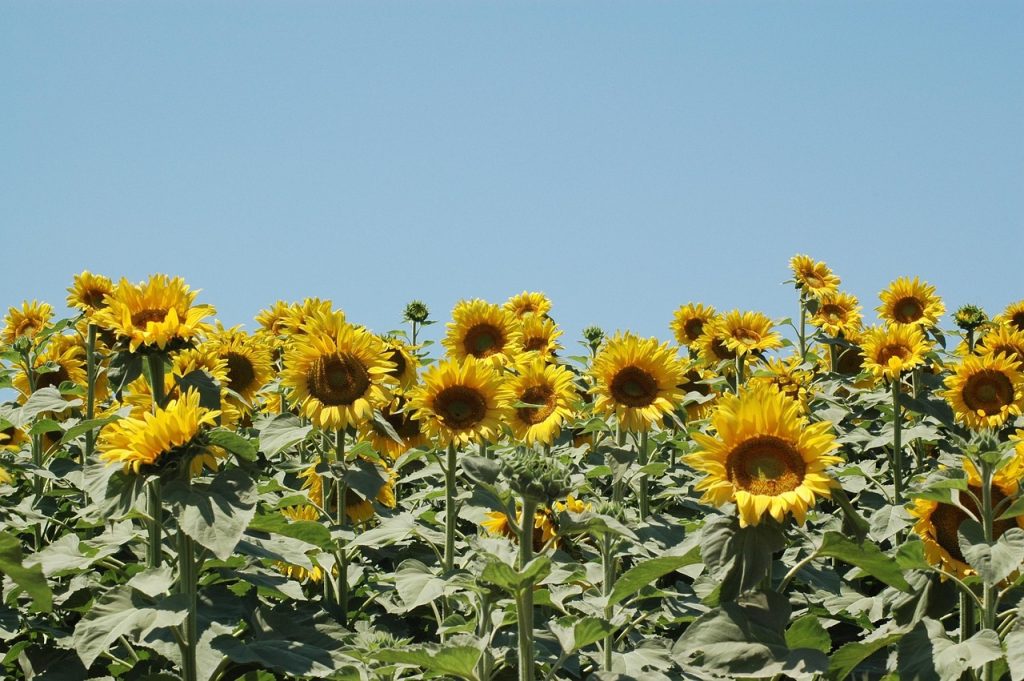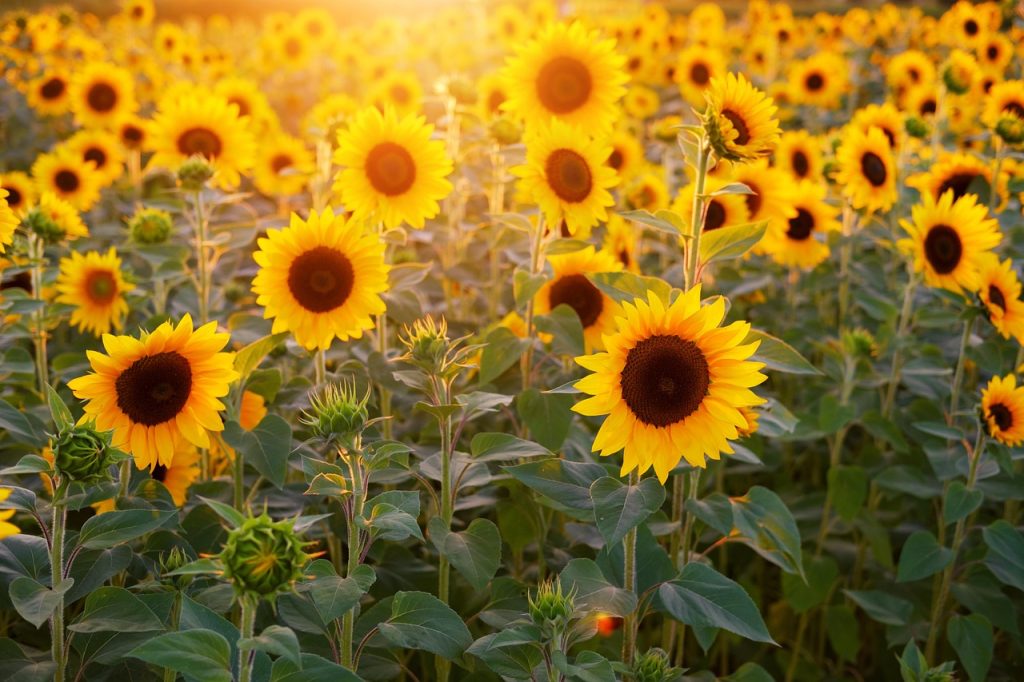The vibrant and towering Care of Sunflowers is more than just a pretty face in the garden, it is a symbol of positivity and joy. With its bold yellow petals and towering presence, the sunflower can turn any outdoor space into a radiant display of color and life. Known for their ability to track the sun, these bright blooms bring not only aesthetic appeal but also ecological benefits, attracting pollinators and providing seeds rich in nutrients. Let’s delve into the world of sunflowers, exploring their origins, varieties, and the best practices for cultivating them in your garden.

The Origin and History of Sunflowers
Sunflowers (Helianthus annuus) are native to North America and were domesticated around 1000 B.C. by indigenous people who recognized their value as a food source. These plants have a long history of cultivation for their seeds, which were ground into flour, eaten as snacks, or pressed for oil. The sunflower’s journey to Europe began in the 16th century when Spanish explorers brought them back from the Americas. Today, they are grown worldwide, admired for both their beauty and utility.
Appearance and Varieties of Sunflowers
Sunflowers are renowned for their large, daisy-like flower heads, which can reach up to 12 inches in diameter. The central disk, typically brown or green, is surrounded by bright yellow petals, although some varieties boast red or orange hues. Varieties range from dwarf Care of sunflowers, which grow to about a foot tall, to giant species that can tower over gardens at heights of 12 feet or more.
Popular Sunflower Varieties
- Mammoth Sunflower: Known for its impressive height and large seeds, ideal for snacking.
- Teddy Bear Sunflower: A dwarf variety with fluffy, double blooms that are perfect for container gardening.
- Autumn Beauty: This variety offers a stunning mix of colors, including red, orange, and yellow.
- Italian White: A branching variety with creamy white petals and a contrasting dark center.
Ideal Growing Conditions for Sunflowers
Light Requirements
Care of Sunflowers thrive in full sun, requiring at least 6 to 8 hours of direct sunlight each day. They are heliotropic, meaning young plants will follow the sun across the sky, maximizing their exposure.
Soil and Water Needs
These robust plants prefer well-drained soil with a neutral to slightly acidic pH (6.0 to 7.5). While they are drought-tolerant, sunflowers benefit from regular watering, especially during dry spells. However, be cautious of overwatering, which can lead to root rot.
Temperature and Climate
Sunflowers are heat-tolerant and thrive in temperatures between 70°F and 78°F. They can withstand warmer climates but require protection from strong winds, which can damage the stems.

Planting and Propagation Techniques
When and How to Plant Sunflowers
For best results, sow Care of Sunflowers seeds directly into the garden after the last frost when the soil has warmed to at least 50°F. Plant seeds 1 to 2 inches deep and 6 inches apart. If planting multiple rows, space them about 30 inches apart to allow adequate growth and air circulation.
Propagation Methods
Sunflowers are most commonly propagated by seed. To harvest seeds for future planting, allow the flower heads to dry on the stalk until the back turns brown. Cut the heads and hang them upside down in a cool, dry place. Once fully dried, rub the seeds out of the heads and store them in a cool, dry location.
Seasonal Care for Sunflowers
Spring and Summer Care
During their growing season, sunflowers benefit from regular watering and occasional feeding. Apply a balanced fertilizer to support their rapid growth. Mulching around the base can help retain moisture and suppress weeds.
Fall and Winter Considerations
As the seasons change, Care of Sunflowers heads will naturally begin to droop and dry out. This is when you can harvest seeds for eating or future planting. In colder climates, consider cutting down the plant after the first frost and composting the organic matter.
Common Problems and Solutions
Pests and Diseases
Sunflowers can be susceptible to pests like aphids, caterpillars, and birds. To deter birds, use netting or scare tactics. For insects, consider introducing beneficial insects like ladybugs or applying neem oil. Fungal diseases, such as powdery mildew, can be managed with proper spacing and ensuring good air circulation.
Environmental Challenges
Strong winds can break Care of Sunflowers stems, so consider staking taller varieties. If your soil is poor, amend it with organic matter to support healthy growth.

Real-Life Uses of Sunflowers
Beyond their visual appeal, sunflowers offer numerous practical uses. The seeds are a nutritious snack high in protein and healthy fats. Sunflower oil is a popular cooking oil with a light flavor. Additionally, sunflowers can be used in biofuel production and as a natural dye source. Their ability to remove toxins from the soil makes them a valuable tool in phytoremediation projects.
Sunflower FAQs
Yes, dwarf varieties like the Teddy Bear sunflower are ideal for container gardening, provided they have enough sunlight and room for roots.
Depending on the variety and conditions, Care of Sunflowers typically bloom 70 to 100 days after planting.
Most sunflowers are annuals and need to be replanted each year, though they often self-seed if left unattended.
Yes, Care of Sunflowers can help improve soil by extracting heavy metals and adding organic matter when composted.